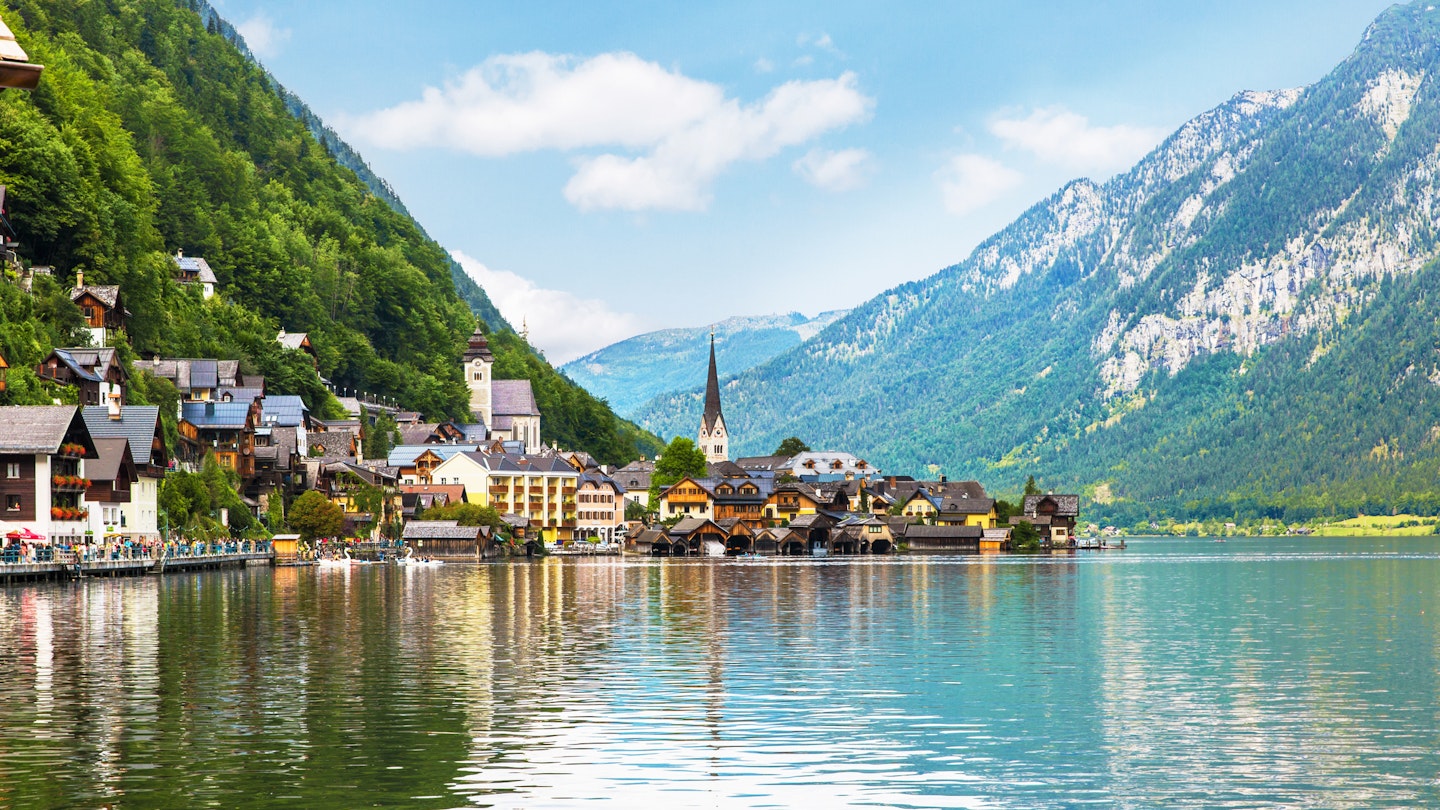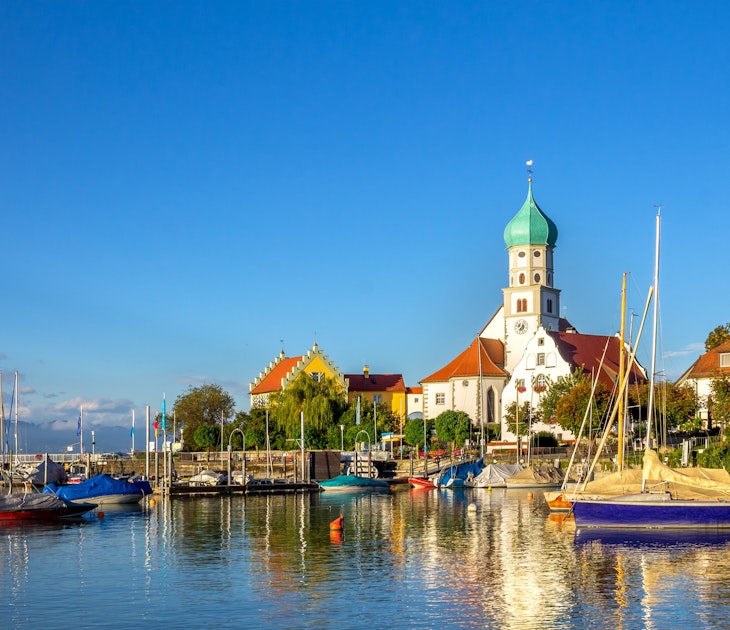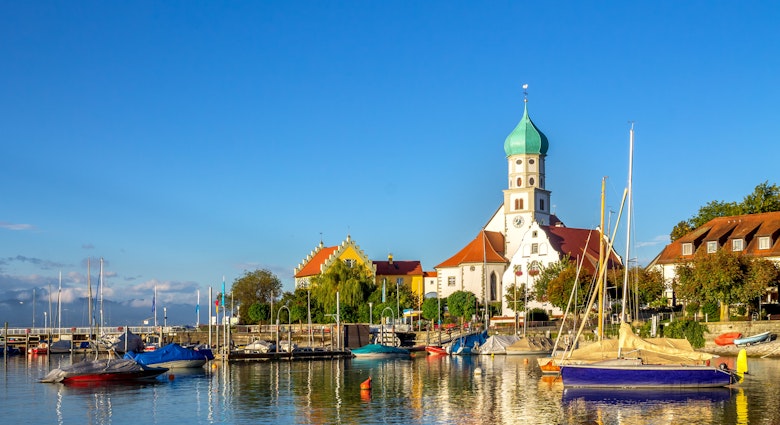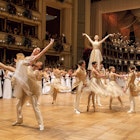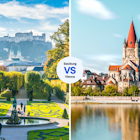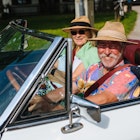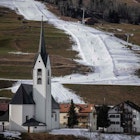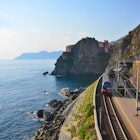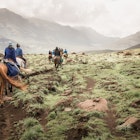Imagine Austria and your mind might well drift to the lavish palaces and coffeehouses of Vienna, the snow-white peaks of the Tyrolean Alps, the serpentine romance of the Danube and Mozart symphonies ringing out in the baroque concert halls of Salzburg. And if this is your first visit, you’ll undoubtedly want to see all the whole darned lot and more besides. But there is far more to this pocked-sized, landlocked country than at first meets the eye.
Whether you are heading gleefully high into the glaciated mountains of Hohe Tauern National Park, tuning into the latest tech wizardry in future-focused Graz, hiding away in the little-visited wilds of the Bregenzerwald, or tripping along the vineyard-draped wine roads of southern Styria, which have more than a whisper of Tuscany about them, Austria richly rewards those who dare to deviate from the well-trodden track. Here's our take on the 12 best places to visit in Austria.
Vienna
Few cities move so effortlessly between past and present as Vienna, where Hapsburg emperors ruled the roost for 600 years. The pomp and splendor can be almost overwhelming, as you waltz through vast, exuberantly gilded palaces like the Hofburg and Schönbrunn, tour Klimt-filled galleries like the Upper Belvedere, stroll grand baroque streets, and saunter past follies and Greek gods in landscaped gardens that gaze down upon the city with a kindly eye.
The music of Mozart, Beethoven and that old romantic devil Strauss reverberates in some of the world’s most feted and opulent concert halls: the Musikverein and Staatsoper. And even going for a coffee can be a regal affair at the likes of chandelier-lit Café Central, where all the 19th-century bigwigs once hung out.
But Vienna isn’t all about show. Venture beyond the big-hitters of the Innere Stadt and the Gothic whack of Stephansdom and you’ll find a liveable, loveable capital that moves to its own urban, edgy beat: in parks sprawling along the banks of the Danube, at the MuseumsQuartier, delivering a serious hit of culture in the former baroque imperial stables, and at food markets like Naschmarkt, where Vienna embraces the world in street food and spice.

Zell am See
Perfect for dipping into the ravishingly mountainous Hohe Tauern National Park, the cheerful Alpine resort of Zell am See sits smugly on the shores of a bluest-blue lake, buttressed by lofty peaks, including the glacier-capped 10,509ft (3203m) Kitzsteinhorn, where you can embark on a glacier trail, kick back on a snow beach, spend the night in an igloo, and ski well into summer.
The resort has a real outdoor buzz in summer, with people rocking up to swim, boat, windsurf and stand-up paddleboard on the lake, cycle around or paraglide above it. If you’re a hiker, you’re in for a treat, too: A cable-car zips up to Schmittenhöhe to hook onto the Pinzgauer Spaziergang, one of Austria’s most memorable day hikes, with exhilarating views of the country’s highest peak, 12,461ft (3798m) Grossglockner. The resort also makes a terrific springboard for the Grossglockner High Alpine Road, a head-spinning, helter-skelter drive, with on-high views of waterfalls, lakes, glaciers and a sea of snowy Alps.
Linz
Other Austrian cities flick on the fairy-tale charm, but not Linz. This is where Austria leaps headfirst into the 21st century. With its gaze fixed firmly on the future, this tech-mad trailblazer has an ever-evolving cultural scene, and is making pioneering waves in avant-garde art and architecture, with a flurry of galleries and buildings at the cutting edge of design; all of which helped it snag Unesco City of Media Arts status back in 2014.
At the top of any itinerary is Ars Electronica Center, zooming in on technology, science and digital media. Here you can interact with robots, animate digital objects, print 3D structures, turn your body into musical instruments and (virtually) travel to outer space. Its over-the-Danube rival is the rectangular glass-and-steel Lentos, a vast repository of modern art, with a stash of Warhol, Schiele, Klimt and Kokoschka originals. Both museums have a face-off of illuminations when they strikingly change color by night.
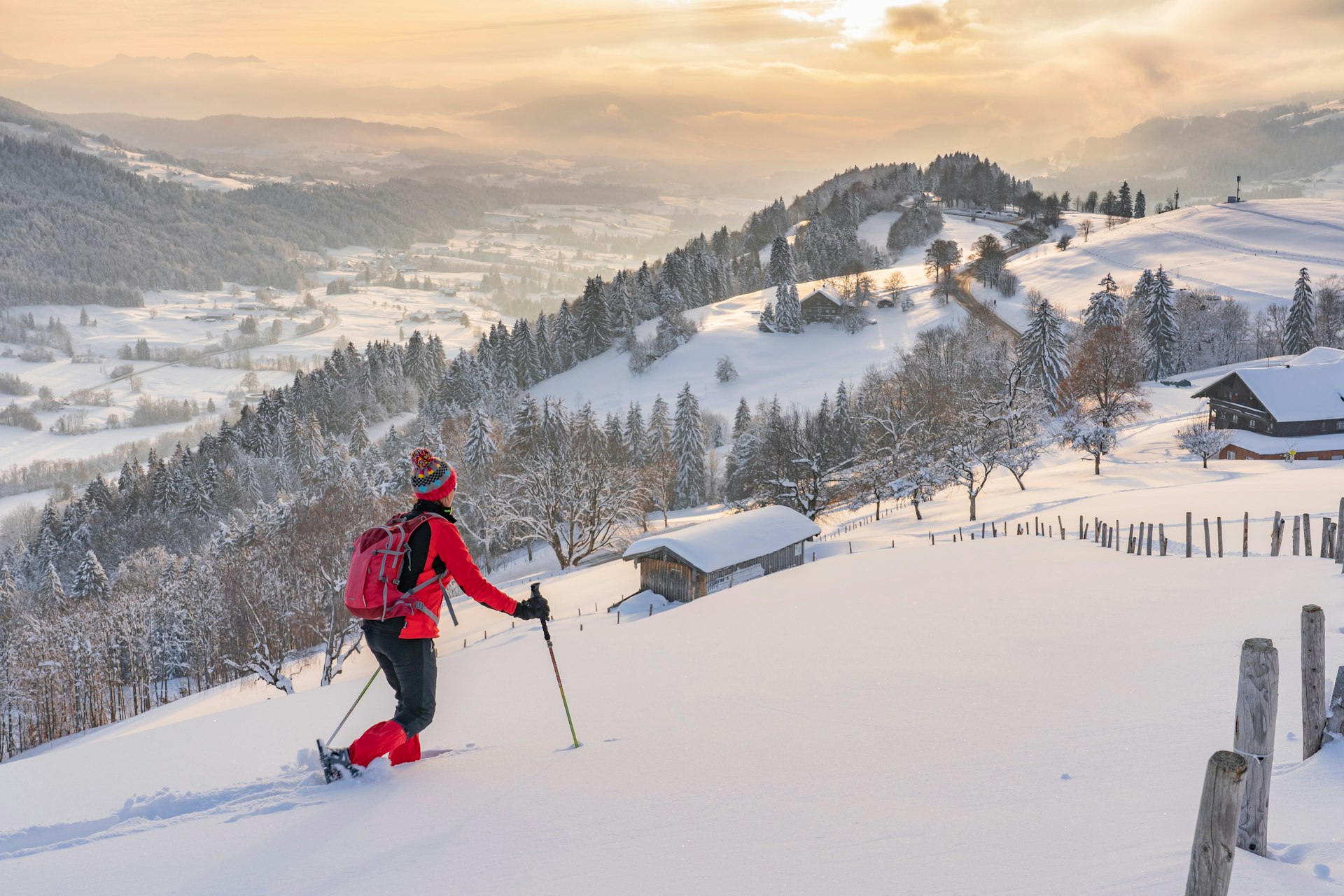
Bregenzerwald
Everyone raves about the mountains of Tyrol and Salzburgerland, but there’s a lesser-known region that deserves a look-in. Huge swathes of Austria's far west, Vorarlberg, remain deliciously off-the-radar, with narrow, silent valleys carving up mighty peaks and forests. It is here that the Alpine heights of the Silvretta-Montafon give way to the wavy hills and lush dairy country of the Bregenzerwald, which in turn fall to the Bodensee (Lake Constance), where Austria rolls into Germany and Switzerland.
The Bregenzerwald, in particular, is an incredibly peaceful and deeply rural corner of the country to slip off the map for a few days, whether hiking, cycling or cross-country skiing. Roads here unzip through cow-nibbled pastures, passing limestone peaks and one ludicrously pretty timber chalet-lined village after the next.
The dream is Schwarzenberg, where you can visit the Angelika Kauffmann Museum before lunch in the wood-panelled parlor at Gasthof Hirschen. The village is a highlight on the region’s KäseStrasse (cheese road), linking up cheese-makers, farm shops and Schoppernau’s show dairy.
Bad Gastein
Smuggled away in a wildly romantic valley in the glacier-capped Hohe Tauern mountains, Bad Gastein is an instant heart-stealer, with belle époque villas that evoke the grace of a bygone age clinging to sheer, forested slopes, and a 1119ft (341m) waterfall plummeting over cliffs. Over the centuries the town has beguiled everyone – from beauty-conscious Romans to romantic souls such as Schubert and Klimt and royals like Empress Elisabeth – for the miraculous healing powers of its radon-laced thermal hot springs.
Today you can take these same waters at the grotto-filled Felsentherme and architecturally innovative Alpentherme baths. Or, for greater impact, go deep into the bowels of the Gasteiner Heilstollen, a medieval gold mine turned health center, to absorb the radon (taster sessions are available), said to cure all manner of ills from arthritis to fibromyalgia.
One look at the mountains that fling up above the valley and you’ll be itching to head higher. A gondola swings up to 7218ft (2200m) Stubnerkogel, where you can hike across a 459ft-long (140m) suspension bridge for out-of-this-world views deep into the snowy Hohe Tauern peaks, or ski in winter.
Innsbruck
The jagged Nordkette Alps rise like a theater curtain above Innsbruck, Tyrol’s knockout of a capital. Here mountains whoosh up above the turquoise Inn River and seem to sneak into every picture. Can’t decide between city and slopes? Here you get the best of both, with a space-age funicular designed by Zaha Hadid winging you up to the Alpine heights of 7657ft (2334m) Hafelekar in mere minutes.
Innsbruck is perhaps unique in the fact you can spend the morning carving powder, hiking or dashing downhill on a mountain bike, and the afternoon with a serious hit of culture. Begin by wafting around the swanky imperial state apartments of the cupola-topped Hofburg palace. Nearby the Goldenes Dachl catches your eye, a late-Gothic oriel shimmering with 2657 fire-gilded copper tiles. But all that glitters here is not gold: just a quick bus hop from of town, Swarovski Kristallwelten in Wattens delivers some serious crystal sparkle.
To ramp up the adventure, head to the neighboring village of Igls for a pulse-quickening ride on the Olympiabobbahn, where you’ll pick up speeds of 68mph (110km/h) as you pinball around 10 curves.
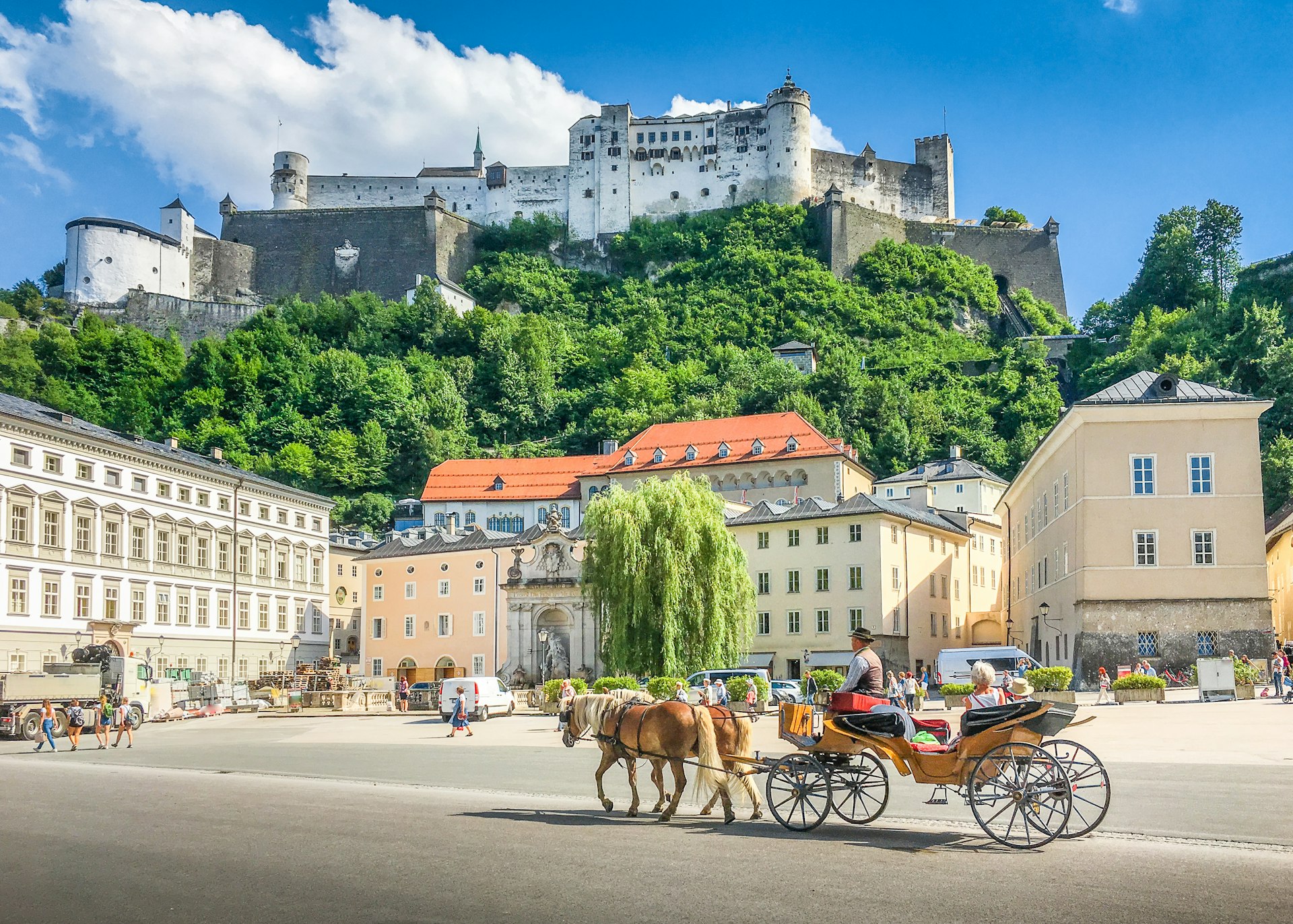
Salzburg
Salzburg looks freshly minted for Hollywood. From the moment you arrive, you’re forced to gaze up in wide-eyed wonder: at the soaring spires of its brilliantly baroque Altstadt, home to the Residenz palace, where prince-archbishops once held court, and the copper-domed cathedral; at its high-on-a-hill, 900-year-old fortress, Festung Hohensalzburg; at the cliffs of 1772ft-high (540m) Mönchsberg flinging up above the city; and at the white-wisped peaks of the Alps that pucker up on the horizon. Walking along the banks of the fast-flowing, turquoise Salzach River, it’s hard to fathom a more perfect city.
Salzburg has churned out many a legend, most notably Mozart, who was born in a bright-yellow townhouse on Getreidegasse, which now harbors a museum that’s an ode to the virtuoso. His high-note-hitting rival is Maria of The Sound of Music (1965) fame. Boundless tours and bike rides whizz around the film locations, or devise your own self-guided spin of them.
There’s no avoiding the fact that Salzburg gets swamped in peak season. Give the selfie stick-wielding crowds the slip by taking a spirit-lifting hike along the wooded cliffs of Mönchsberg to Augustiner Bräustübl, a 400-year-old, monk-founded brewery, with Oktoberfest flavor, vaulted parlors, and a 1000-seat beer garden for quaffing foaming beers under the chestnut trees. Or for a breath of fresh Alpine air and trails weaving deep into the mountains, take the cable car up to 6079ft-high (1853m) Untersberg on the border with Bavaria.
The Wachau
There is a certain poetry to the way the Wachau opens up, with orchards and vineyards ribbing terraced slopes staggering down to the meandering River Danube, and trails waltzing through field and forest to medieval castles romantically poised on hillsides. With an exciting food and wine scene, paths that are a joy to explore on foot or by bike, and landscapes that unravel as harmoniously as a Strauss symphony, this stretch of the Danube Valley is so darned scenic that it has been granted Unesco World Heritage status.
The big-hitter culturally is Stift Melk, a twin-spired, onion-domed baroque stunner of an abbey, with a sunny yellow facade and flamboyantly frescoed monastery church. Beyond this, you’ll want to see the fairy-tale that is Dürnstein’s ruined castle, where Richard the Lionheart was locked up in the late 12th century for insulting Leopold V, and the low-key village of Spitz, topped off by the 1000-Eimer-Berg, so-named for its ability to fill 1000 buckets of wine each season.
Graz and the Styrian Wine Roads
With a castle high on a bluff, an Altstadt that’s a jumble of Renaissance courtyards and baroque palaces hinting at nearby Italy, and some strikingly avant-garde galleries, Graz is an endearingly laid-back, cultured city for dipping deeper into the oft-overlooked region of Styria in southern Austria.
Using the city as a base, you can easily strike out onto the Weinstrassen (wine roads) that vein the gently rolling hills, flower-stippled meadows, forests and vineyards that carpet the south of the province. With vineyards marching up steep hillsides and even the odd poppy and cypress tree, this is Austria’s answer to Tuscany (minus the crowds) and perfect road trip territory. As you make your way through towns like Leutschach, Ehrenhausen, Gamlitz and Berghausen, you’ll find wineries opening their doors for tastings and farmhouses offering rustic respite. On the last weekend in September, the region pops many a cork at its Weinlesefest (wine harvest festival).
Salzkammergut Lakes
If you’ve ever swooned over a lake scene in The Sound of Music it was probably filmed in the Salzkammergut, a fantasy region of jewel-colored Alpine lakes, wildflower-strewn valleys and peaks topping out near the 9845ft (3000m) mark. Should you only have time to see one lake, make it the sublimely gorgeous one in mountain-rimmed Hallstatt, whose Unesco World Heritage salt mines look back on 7000 years of history and once produced the region’s "white gold".
But you would be wise to allow longer so you can soak in thermal baths in spa town Bad Ischl, bathe in the warm waters of crescent-shaped Mondsee, follow in pilgrim’s footsteps to Wolfgangsee, and explore the icy underworld of the Dachstein Caves in Obertraun.
While July to early September are ideal for lake swimming (the water can get mighty chilly at other times of the year), you might prefer to visit in the shoulder seasons – spring and autumn are glorious – to escape the throngs and enjoy the lakes at their peaceful best.
Steyr and Nationalpark Kalkalpen
So you want to go properly off piste? Upper Austria is the place to do just that. Somehow this region has managed to slip under the tourist radar – and what a shame that is. This province has its own quiet, lingering beauty, with golden wheat fields giving way to patchwork fields and apple orchards that in turn rise to mountains rolling to the Czech border. It’s a joy to explore on foot or by bike, with cycle paths hugging river banks, rambling farms selling homegrown Most (cider) and mellow autumn mists.
The fairest town by far is Steyr, which composer Franz Schubert called "inconceivably lovely" and used as the inspiration for his sprightly Trout Quintet. At the confluence of the swiftly flowing Enns and Steyr rivers, this pretty town of cobblestones and pastel-hued baroque houses makes a brilliant base for diving into the rest of the region. For hiking, mountain-biking and rock climbing action, the Nationalpark Kalkalpen’s limestone peaks, gorges, and high moors are within easy striking distance.
St Anton am Arlberg
In the beginning there was St Anton am Arlberg... In the place where the country’s first ski club was founded in 1901 and downhill skiing was born, the Austrian Alps take a huge leap into wilder heights. Overshadowed by a real beast of a mountain called Valluga (9216ft/2809m), this resort makes even veteran skiers quiver in their boots with some of Austria’s steepest on- and off-piste skiing. The ultimate challenge is the Run of Fame. One of the longest circuits in the Alps, this 53-mile (85km) marathon ski wraps up the entire Arlberg arena and covers 11 vertical miles (18km). With 190 miles (305km) of slopes to pound, the skiing here is the stuff of legend. And the après-ski scene is bonkers – people here like to party as hard as they play.
While winter is the big deal for most, there’s plenty of action in summer too, with hiking trails heading from peak to glorious peak, and adventure pros H2O taking you white water rafting on the fast-flowing Inn River, canyoning in the surrounding gorges, tubing, and mountain biking.
You might also like:
From palace to peak: the 10 best things to do in Austria
Austria's national parks are an Alpine playground
18 top things to do in Vienna

